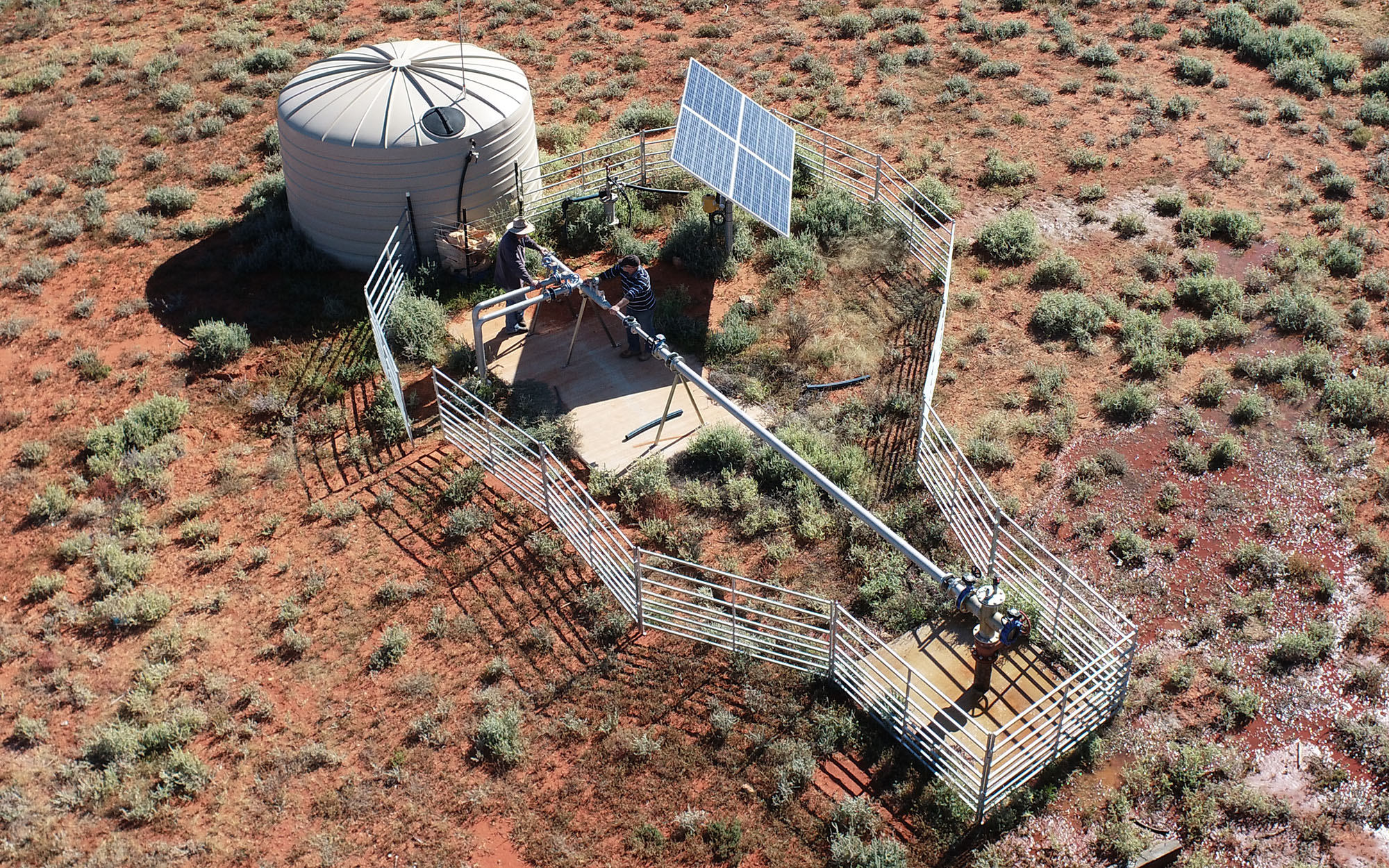NSW has supported the Improving Great Artesian Basin Drought Resilience (IGABDR) Program since 2019 and, prior to that, the Cap and Pipe the Bores Program for more than a decade.
The IGABDR program will deliver 12 new bores by 30 December 2024 across the Moree, Brewarrina, Bourke and Coonamble areas. So far, 9 are completed, one is underway and the final two will be installed soon.
Since these programs started, we’ve rehabilitated over 400 free flowing bores, removed around 10,000 kilometres of bore drains and installed 18,000 kilometres of piping.
In an extremely tough economic climate, we have had to put the funding for IGABDR on pause. Project works currently underway will be completed.
We are continuing to work collaboratively with the Australian Government to meet our commitments under the Murray Darling Basin Plan.
About the program
The Improving Great Artesian Basin Drought Resilience program aims to improve water security and drought resilience for eligible landholders across the Great Artesian Basin (GAB) in NSW by replacing or upgrading uncontrolled flowing and aging artesian bores with new bores and water reticulation systems.
Aging, failing and uncontrolled free flowing water bores and open bore drains have led to significant water and pressure loss across the GAB. As a result, artesian pressure has fallen with up to 95% of water delivered through open bore drains wasted due to evaporation and seepage.
The program is a five-year $18.2 million initiative jointly funded by the Australian Government ($9.1 million) and the NSW Government ($9.1 million). The program also received additional NSW Government funding ($3.9 million) as part of 2019 election commitments and via landholder funding.
The importance of the Great Artesian Basin
The Great Artesian Basin is a large underground water resource covering nearly a quarter of the Australian mainland across Queensland, New South Wales, South Australia and the Northern Territory. It lies under 25% of inland NSW.
Water from the GAB is essential for the health and economic and social development of the state.
Water from the GAB is an important source of drinking water and water security for more than 120 regional NSW towns. It is used for drinking, washing and other domestic uses.
The GAB also underpins economic development and employment by supporting regional industries, such as agriculture, mining and tourism. It provides a reliable source of water for crops and livestock, particularly in drier regions of the state.
It is also important to First Nation communities maintaining cultural, social and spiritual connections to the land and water. First Nations people have relied on GAB water to live in dry inland areas of Australia for more than 60,000 years. The natural springs hold important cultural and spiritual significance and are integral to many First Nations ceremonies and stories.
The isolated nature of the springs and the surrounding arid environment also means approximately 80 rare species of great ecological and evolutionary significance call it home.
Impact of uncontrolled and aging bores in the Great Artesian Basin
The loss of water through uncontrolled and aging bores across the GAB:
- has significant implications for the water security of regional towns, agriculture and other industries, especially in times of drought
- threatens groundwater-dependent ecosystems, such as wetlands, springs and water dependent vegetation
- can lead to the drying up of these ecosystems, which can have a serious impact on the plants and animals relying on them
- encourages the spread of pests responsible for the decline of native species, as well as weeds that degrade the soil - accelerating soil erosion and threatening the biodiversity of natural grasslands.
By replacing or upgrading this bore infrastructure, landholders benefit through increased access to water, improved biodiversity and reduced salinisation on their property.
Communities and landholders relying on the GAB are already seeing improved water security, drought resilience and increased water pressure as a result of the program.
Through the program, and the previous cap and pipe the bores program, the NSW Government has:
- saved more than 80,000 megalitres of water from evaporation and seepage each year
- rehabilitated more than 400 free flowing bores
- removed more than 10,000 km of open bore drains
- installed more than 18,000 km of enclosed piping.
NSW GAB Bore Integrity Risk Assessment
Funded through the Improving Great Artesian Basin Drought Resilience Program, the department conducted a survey over several years of the bores screened in the Great Artesian Basin.
Implementation of Cap & Pipe the bores programs over the last three decades has resulted in pressure increases within the NSW GAB. This has led to a situation where a few bores which previously ceased flowing, recommenced flowing in some areas. Many artesian bores are ageing, and the structural integrity of several bores is compromised. This can result in cross aquifer contamination and water wastage through leaking head works, which require attention through future water infrastructure efficiency programs.
Three phases of bore survey program were conducted between 2018 and 2022 across the NSW GAB to gather information on the condition of ageing artesian bores and the bores that are expected to recommence flowing. A total 860 bores were visited. The data collected was used to inform the priority of bores at risk.
Report
In 2024, NSW Department of Climate Change, Energy, the Environment and Water conducted a bore integrity risk assessment for 1,552 bores in the NSW Great Artesian Basin to prioritise future cap and pipe the bores programs. The assessment focused on bores with a history of artesian conditions (flowing) and those likely to become artesian. Bores were categorised into four risk levels: extreme, high, medium, and low. The assessment identified 324 bores at extreme risk, requiring urgent intervention.
Download the NSW GAB Bore Integrity Risk Assessment (PDF. 3,500KB)Environmental planning and assessments
View the program's Environmental Planning and Assessment Regulation [Clause 171(4)] publications below:
Contact us
If you have questions or want to know more about the project, call 1300 081 047 or email us at water.enquiries@dpie.nsw.gov.au
